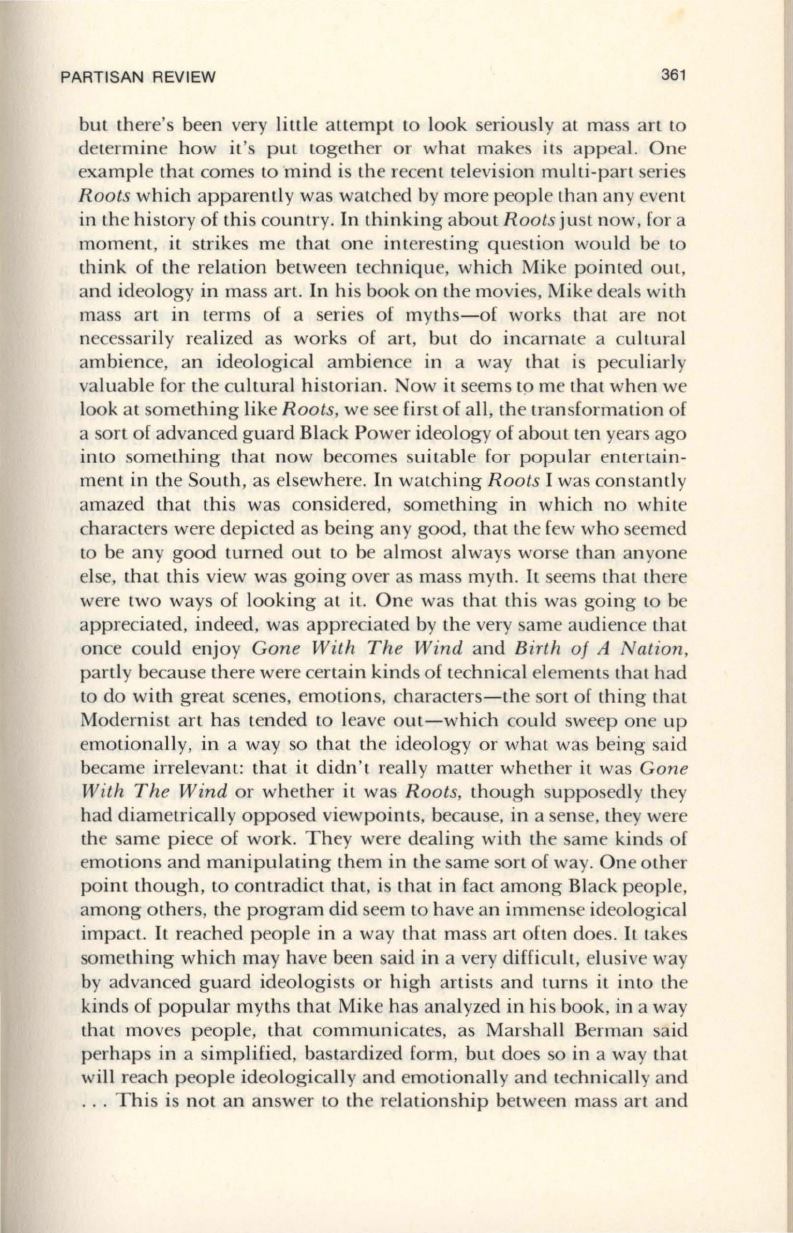
PARTISAN REVIEW
361
but there's been very little attempt to look seriously at mass art to
determine how it's put together or what makes its appeal. One
example that comes to mind is the recent television multi-part series
Roots
which apparently was watched by more people than any event
in the history of this country.
In
thinking about
Roots
just now, for a
moment, it strikes me that one interesting question would be to
think of the relation between technique, which Mike pointed out,
and ideology in mass art.
In
his book on the movies, Mike deals with
ma s art in terms of a serie of myths-of works that are not
necessarily realized as works of art, but do incarnate a cultural
ambience, an ideological ambien e in a way that is peculiarly
valuable for the cultural historian . Now it seems tp me that when we
look at something like
Roots,
we see first of all, the transformation of
a sort of advanced guard Black Power ideology of about ten years ago
into something that now becomes suitable for popular entertain–
ment in the South, as elsewhere.
In
watching
Roots
I was constantly
amazed that this was considered, something in which no white
characters were depicted as being any good, that the few who seemed
to
be any good turned out
to
be almost always worse than anyone
else, that this view was going over as mass myth.
It
seems that there
were two ways of looking at it. One was that this was going to be
appreciated, indeed, was appreciated by the very same audience that
once could enjoy
Gone With The Wind
and
Birth of A Nation,
partly because there were certain kinds of technical elements that had
to
do with great scenes, emotion , characters-the sort of thing that
Modernist art has tended to leave out-which could sweep one up
emotiona ll y, in a way so that the ideology or what was being said
be ame irrelevant: that it didn't really matter whether it was
Gone
With The Wind
or whether it was
Roots,
though supposedly they
had diametrically opposed viewpoints, because, in a sense, they were
the same piece of work. They were dealing with the same kinds of
emotions and manipulating them in the same sort of way. One other
point though, to contradict that, is that in fact among Black people,
among others, the program did seem to have an immense ideological
impact.
It
reached people in a way that mass art often does.
It
takes
something which may have been said in a very difficult, elusive way
by advanced guard ideologists or high artists and turns it into the
kinds of popular myths that Mike has analyzed in his book, in a way
that moves people, that communicates, as Marshall Berman said
perhaps in a simplified, bastardized form, but doe so in a way that
will reach people ideologically and emotionally and technically and
... This is not an answer to the relationship between mass art and


